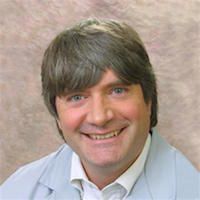Article
Multiple Sclerosis Stem Cell Transplant Compared to Disease-Modifying Therapy
Author(s):
In a rare clinical trial, stem cell transplantation appeared to provide greater protection against MS progression than DMT.

Richard Burt, MD
Stem cell transplantation appeared to provide greater protection than disease-modifying therapy (DMT) against progression of relapsing-remitting multiple sclerosis (MS), in the first randomized clinical trial to compare the interventions.
Richard Burt, MD, Division of Immunotherapy, Northwestern University Feinberg School of Medicine, Chicago, IL, and colleagues described the unmet need in MS treatment, and the potential for stem cell transplantation as a treatment option.
"Despite a 2013 annual cost of treatment with DMT of approximately $65,000 per patient, the proportion of patients with no evidence of disease activity is 30% to 50% after 2 years of treatment, and approximately 18% after 4 years of treatment," Burt and colleagues observed.
"The majority of patients with relapsing-remitting MS eventually enter an axonal degenerative phase of irreversible and progressive disability for which there are no significant efficacious therapies and during which there is an increase in disease-related mortality," they indicate.
In contrast with DMT, the investigators explained, hematopoietic stem cell transplantation (HSCT) is designed to eliminate autoreactive lymphocytes, and essentially restart a new immune system in a non-inflammatory environment without costimulatory signals.
Burt and colleagues conducted the Multiple Sclerosis International Stem Cell Transplant (MIST) randomized clinical trial to compare the effects of nonmyeloablative HSCT treatment with continuing DMT treatment on disease progression among patients with highly active relapsing-remitting MS.
The investigators identified study participants with relapsing-remitting MS at 4 centers, in and outside the US, who had either 2 or more clinical relapses, or 1 relapse and MRI gadolinium-enhancing lesion at a separate time within the previous 12 months despite receiving DMT. A total of 110 participants were randomized to either switch to a different DMT with higher anticipated efficacy and/or different pharmacologic category (n=55), or to discontinue the DMT and commence HSCT (n=55).
The primary end point was time to disease progression, defined as an increase (worsening) in Expanded Disability Status Scale (EDSS) score of at least 1 point on 2 evaluations, 6 months apart, after at least 1 year of treatment, that was not due to a non-MS disease process. Most participants remained in the trial for at least 1 year, and 23 were able to be evaluated yearly for 5 years. After at least 1 year of treatment, participants in the DMT group who experienced progression of disability could cross-over to receive HSCT.
In an editorial accompanying the trial report, Harold Atkins, MD, Ottawa Hospital Blood and Marrow Transplant Program, Ottawa Hospital Research Institute at the University of Ottawa, pointed out that an endpoint of no evidence of disease activity—no relapse, no progression, and no new MRI changes during the follow-up period—is increasingly being used in studies of HSCT and other agents,
"Given the morbidity associated with HSCT and its potential mortality, it is justified to ask that proof of effectiveness be more than just the reduction in MRI lesions or clinical relapses," Atkins indicated.
The investigators found that HSCT was associated with longer time to disease progression than DMT. During the first year, mean EDSS scores improved from 3.38 to 2.36 in the HSCT group and worsened from 3.31 to 3.98 in the DMT group. Although there were too few events in the HSCT group to determine median time to disease progression, the DMT group evidenced progression in median 24 months.
Burt and colleagues also noted that those patients who crossed over to HSCT subsequently improved in EDSS. This may indicate, they suggested, that "the current definitions of progression for relapsing-remitting MS may not accurately assess irreversible disease progression for all patients."
Atkins offered several qualifications in interpreting the trial results, however, including that patients were not being treated with the most effective DMT regimens that are now available.
"The inclusion of patients who were less than optimally treated in the DMT group needs to be considered when interpreting the results of this study," Atkins cautioned.
The study, "Effect of Nonmyeloablative Hematopoietic Stem Cell Transplantation vs Continued Disease-Modifying Therapy on Disease Progession in Patients with Relapsing-Remitting Multiple Sclerosis," was published in the Journal of the American Medical Association.




